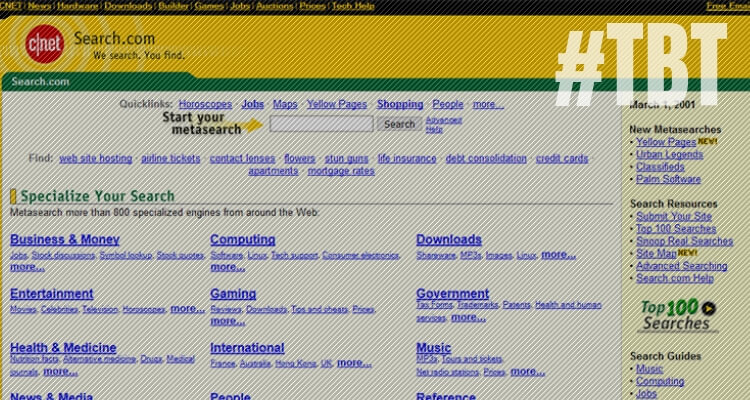Before search engine companies (and particularly Google) grew to become gargantuan players in the economy, there were myriad competing search engines and directories, none really gaining the upper hand (you know – like Infoseek, AltaVista, Inktomi, Lycos, Ask Jeeves, Looksmart, Open Directory, Yahoo, and, er, Google).
They ranked content differently as they each tried to come up with the most accurate algorithms (or in some cases, human-curated means) for doing so. [Today, “the algorithm” basically refers to a single (rhymes with “Foogle”) search engine’s many “ranking factors.”]
It could be very frustrating in those days to stick with a single search engine. So you’d try three or four, desperately searching for relevant information about your query. Users craved a shortcut.
That shortcut came in the form of metasearch engines that sent your query out to various search engines, and then came back with a set of results based on a recipe of which items ranked well across multiple search engines. Some ranking systems were opaque; others more open.
Shortcut cut short
As with much of the digital world, the most compelling technology or methodology didn’t always win. Brands, strategic positioning, and budgets helped some metasearch engines stand out more than others. I tended to prefer Metacrawler because it had the best name. It was also an early entrant, having launched in 1995 at the University of Washington (which also spawned Pine, an early email client).
The metasearch craze was already fading fast when some small upstarts saw the handwriting on the wall and got out fast. SavvySearch sold to CNET for $22 million for a combination of cash and stock. (At the time, $22 million was seen as a ridiculous sum by many – and you know what? Given the financial picture for the acquired company, and its longevity, it probably was. They were partying like it was 1999.)
It’s funny to think about how much people still prefer services like Trivago and Kayak. I guess people still like the idea of metasearch!
First contact
On an autobiographical note, I also quite enjoyed a metasearch engine named Ixquick. Founded by a tech-savvy former Wall Street accountant, Ixquick had a quirky way of ranking results by looking at how many times an item ranked anywhere in any of the top nine search engines’ results for your query (presumably we are talking about ranking anywhere in the top 10 or top 50). For each appearance, regardless of how high or how low, a piece of content would get a “star.” The rank order was in order of how many stars a piece of content garnered, so the user was dimly aware that there were “ties” and that the very idea of rank order is subjective.
Back in the dot com bubble era, I particularly liked Ixquick because, through a series of strange accidents, I became an adviser to the company. Keep in mind this was before I was even “working in the industry,” although I was running my ideas up the flagpole by writing about search engines and other search marketing topics at Traffick.com.
Before long, Ixquick sold, too – for a price quite a bit below SavvySearch’s – in an all-cash deal. Through my brief involvement advising Ixquick, I made my first “real money” in our industry. The cash came in handy to help pay off student loans and to pay for a honeymoon. I decided I’d stick it out and try to figure out if there was any possible way to continue to make money in this industry. I loved it so much, I wasn’t particularly specific about how – just as long as it was something.


